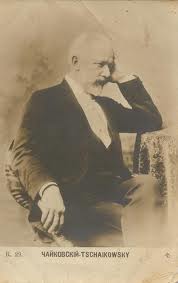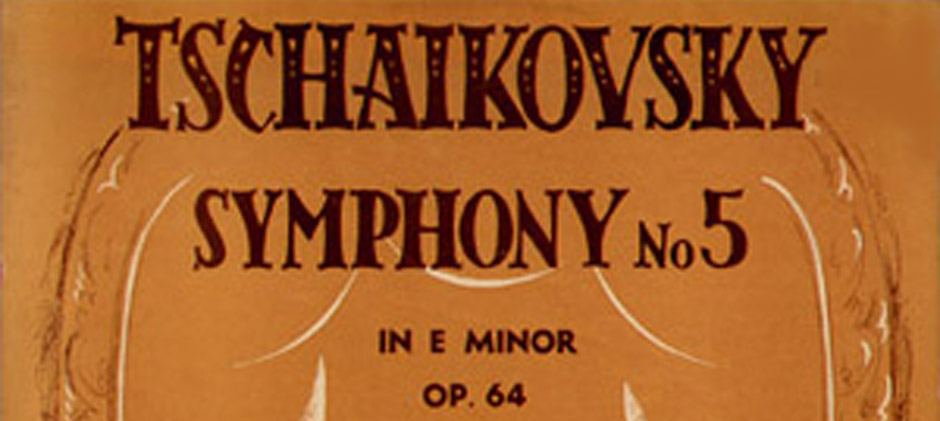- Русский
- English
Russian Masters
Moscow Symphony Orchestra - Arthur Arnold, Conductor
Michail Petuchov - Piano
Glinka - Overture Ruslan & Ludmila
Rubinstein - Piano Concerto No. 4
~
Tchaikovsky - Symphony No.5
Glinka: Overture to Ruslan and Lyudmila

Mikhail Glinka was born in Novospasskoye, Russia on June 1, 1804 and died in Berlin, Germany on February 15, 1857. The opera Ruslan and Lyudmila was conceived in 1836 and composed 1837-1842; the overture was written last, during rehearsals for the first production. The work runs approximately 5 minutes in performance and is scored for 2 flutes, 2 oboes, 2 clarinets, 2 bassoons, contrabassoon, 4 horns, 2 trumpets, 3 trombones, timpani, and orchestral strings.
Glinka conceived Ruslan and Lyudmila shortly after the triumphant premiere of his first opera, the powerfully nationalistic A Life for the Tsar. Based on a narrative poem by Pushkin, Ruslan and Lyudmilais a “magic” opera, by turns heroic and fantastic, sensuous and enchanting, humorous and scary. The story, set in olden times in exotic places, has the trappings of a fairy tale: a beautiful princess, a valiant suitor, a wicked sorcerer, magical objects, rivalry and battle, abduction and rescue, death and resurrection. The libretto was cobbled together by several contributors; one of Glinka’s friends claimed to have worked out the scenario “in a quarter of an hour, while drunk.” Nevertheless, Glinka produced five acts of vividly imagined, brilliantly orchestrated music, drawing on the sorts of non-Western idioms cherished by russian romantics ? Arabian, Caucasian, Finnish, Persian, Turkish, and of course russian.
Ruslan and Lyudmila (and russian opera generally) was soon overshadowed in russia by a vogue for Italian opera, and it subsequently had a checkered critical and production history. Still, it greatly influenced later russian composers ? Tchaikovsky dubbed it “the Tsar of operas” ? and the musicologist richard Taruskin calls it “the quintessential russian romantic opera,” the only one “worthy of comparison with the european masterpieces of the genre.”
The sparkling overture, set in sonata form and based on themes from the opera, encapsulates the story’s central dramatic conflict and the range of Glinka’s score. After a spirited introduction, the hero ruslan is memorably depicted by the vigorous first theme, but, as the music unfolds, more exotic harmonies and instrumental colours emerge, representing, for instance, the Khazar and Varangian princes who rival ruslan for the hand of Lyudmila, daughter of the Grand Prince of Kiev. The principal themes are eventually recapitulated, and near the end the sorcerer Chernomor, who imprisons Lyudmila, is depicted unforgettably by a loud descending whole-tone scale in the bass. (Here Glinka established an enduring convention of russian music: using diatonic and chromatic idioms to represent, respectively, the human and the supernatural.) In the faster coda, as in the opera itself, ruslan finally emerges triumphant.
Tchaikovsky - Symphony No. 5 in E minor, op. 64
 For all the considerable charms and skill to be found in the first three symphonies of Pyotr Ilyich Tchaikovsky, the epic scale of his Fourth Symphony signaled a giant advance in terms of technique, ambition, and expressive richness. He would continue to explore the implications of this evolution in his remaining symphonies. For the Fourth, Tchaikovsky supplied an elaborate program detailing the "content" of each movement. This program centered on the idea of Fate, as represented by the brass fanfare that blazes out at the start. The Fourth was followed by the most programmatic of all the composer's symphonies, the unnumbered Manfred Symphony of 1885, based on Lord Byron's poetic drama of the same name, which features a variant of the Faustian hero.
For all the considerable charms and skill to be found in the first three symphonies of Pyotr Ilyich Tchaikovsky, the epic scale of his Fourth Symphony signaled a giant advance in terms of technique, ambition, and expressive richness. He would continue to explore the implications of this evolution in his remaining symphonies. For the Fourth, Tchaikovsky supplied an elaborate program detailing the "content" of each movement. This program centered on the idea of Fate, as represented by the brass fanfare that blazes out at the start. The Fourth was followed by the most programmatic of all the composer's symphonies, the unnumbered Manfred Symphony of 1885, based on Lord Byron's poetic drama of the same name, which features a variant of the Faustian hero.
But Tchaikovsky grew ambivalent about the issue of program music. (Mahler experienced a similar uneasiness about feeding scenarios to his audience and decided to remove the descriptive guide with which he had initially introduced his First Symphony, a work which was premiered a year after Tchaikovsky's Fifth.) For his final Sixth Symphony (thePath?tique), the Russian composer developed an esoteric, "private" program that has kept generations of commentators busy trying to decipher its internal musical codes.
The Fifth Symphony, which Tchaikovsky wrote in the summer of 1888, seems to occupy a middle ground between this "tell-it-all" approach and a secretive attitude. The composer supplied a minimal description in his working notebook, where he suggested that the opening-and recurrent-theme represented "complete resignation before Fate." Could it be that-following his detailed programs for the Fourth and Manfred Symphonies-Tchaikovsky was simply fed up with seeing his music reduced to this kind of narrative, as if his scores lacked their own inner validity?
To be sure, all of these symphonies-the Fourth through Sixth and Manfred, not to mention the operas Eugene Onegin and The Queen of Spades-are interconnected by an obsession with the concept of Fate. This idea functions as both a structural and an emotional element. And it can illuminate our experience of the music as long as we don't fall into the trap of assuming such allegorical notions exhaust its meaning. Rather, they are merely triggers that inspire the composer to conceive a remarkably diverse range of sonic images, for each of which he develops a unique dramatic context appropriate to the musical material in question.
For example, consider the opening measures of the Fifth Symphony. This slow, brooding introduction, with its tentative mournfulness, could hardly be further removed from the threatening Judgment Day blaze of horns that launches the Fourth. Yet both are routinely labeled the "fate themes" of their respective symphonies (a practice I might as well honor). And both recur at significant moments as each symphony progresses, affecting a sense of unity and coherence. This structural idea became a favorite of several Romantic composers and was pioneered by no less than Berlioz (in his Symphonie fantastique, where he introduces a melodic "id?e fixe" as a figure for the artist's love obsession). So both the Fourth and Fifth Symphonies of Tchaikovsky might be perceived as symphonies "about" fate. Yet both set out on entirely distinct musical journeys.
The world explored by the Fifth is one of maximal contrasts and shocking climaxes, all expressed through vivid orchestral coloring. Tchaikovsky-despite his self-critical misgivings and insecurity about this work-demonstrates superb craftsmanship in his use of the orchestra. Indeed, it's entirely possible to set aside all programmatic notions and simply to experience this music as a study in instrumental textures, proportions, and rhythms. Subdued palettes, moments of balletic grace, and shocking outbursts alternate throughout the work. After introducing the Fate theme with clarinets and strings in a low register, for example, Tchaikovsky continues to explore gradations of this dark, somber sonority (somewhat reminiscent of the slow opening of the Romeo and Juliet Fantasy-Overture).
The slow opening has a clear kinship with the main theme of the first movement proper, an idea in dotted rhythm first entrusted to clarinets and bassoons. Along with timbre, the introductory music-regardless of whether it "stands for" fate-and this new theme share a striking rhythmic profile and a powerful sense of momentum becomes a protagonist in its own right throughout the movement. The great climax at the end of the exposition contains more than a hint of the similar driving rhythm from the first movement of Beethoven's Seventh Symphony. It also restores focus after the profusion of melodic ideas rising in the strings which precede it. Among the many surprises in this work: just as we seem poised for a powerful, fully orchestrated restatement of the theme in the coda, Tchaikovsky dims the volume and darkens the texture in a kind of anticlimax-as if to indicate a hopeless circle being traced back to the brooding depths where we began. (The gesture foreshadows his even more radical collapse into despair at the end of thePath?tique).
The Andante begins with another variation on the deep melancholy of the opening. Even if Tin Pan Alley tunesmiths hadn't plundered Tchaikovsky for the 1939 hit "Moon Love," the horn melody that magically emerges seems to suggest a gently amorous nocturne. Meanwhile, a counter theme-first heard as call-and-response by oboe and horn-almost imperceptibly enters into the soundscape. About halfway through, the fate theme likewise stealthily reenters the picture almost before we realize it's there, only to erupt with full power in the brass. It later comes back (toward the end) even more intrusively-now with brutal violence. The lyrical music returns in a fragmentary way, unable to recapture its earlier serene glow.
In the third movement, instead of a scherzo proper, Tchaikovsky explores a dreamy sensibility, spinning it out in the manner of one of his characteristic waltzes. This music introduces a disarming na?vet? into the symphonic context-a striking juxtaposition which reminds us that Mahler is just around the corner. Compared with the relatively equal proportions of the other three movements, the Valse's brevity underscores the fleeting nature of this respite. Tchaikovsky nearly lulls us to the point of not noticing the understated appearance of the fate theme as it steals in near the very end, where, against the plucked strings' waltz, it appears in low, dark colors.
The finale mirrors the same overall structure as the first movement, with a slow introduction leading to the main movement-though now the "anticlimactic" ending is reversed by a triumphant breakthrough. The fate theme, respelled in the major in the introduction, is pronounced with majestic accents: Funeral march has become affirmative chorale. With some help from the timpani, the introduction segues into an Allegro vivaceof breathtaking energy in which the major-mode, majestic version of the fate theme periodically emerges. Finally, after a notorious "false" stop several minutes before the end, the music courses ahead in a rush of frenzied, joyful abandon.
But has unequivocal victory really been achieved? In the very last measures, Tchaikovsky even revives the main theme of the first movement, also now steel-plated in the major, and adds a pompous rhetorical flourish, as if to underscore "The End." There's at least a hint of irony, of protesting too much-perhaps foreshadowing Shostakovich's strategy in his own Fifth Symphony. Tchaikovsky, in any case, voiced his own doubts about the effectiveness of this ending. In his next, and final, symphony, he would reverse its apparent optimism with music of inescapable doom.



